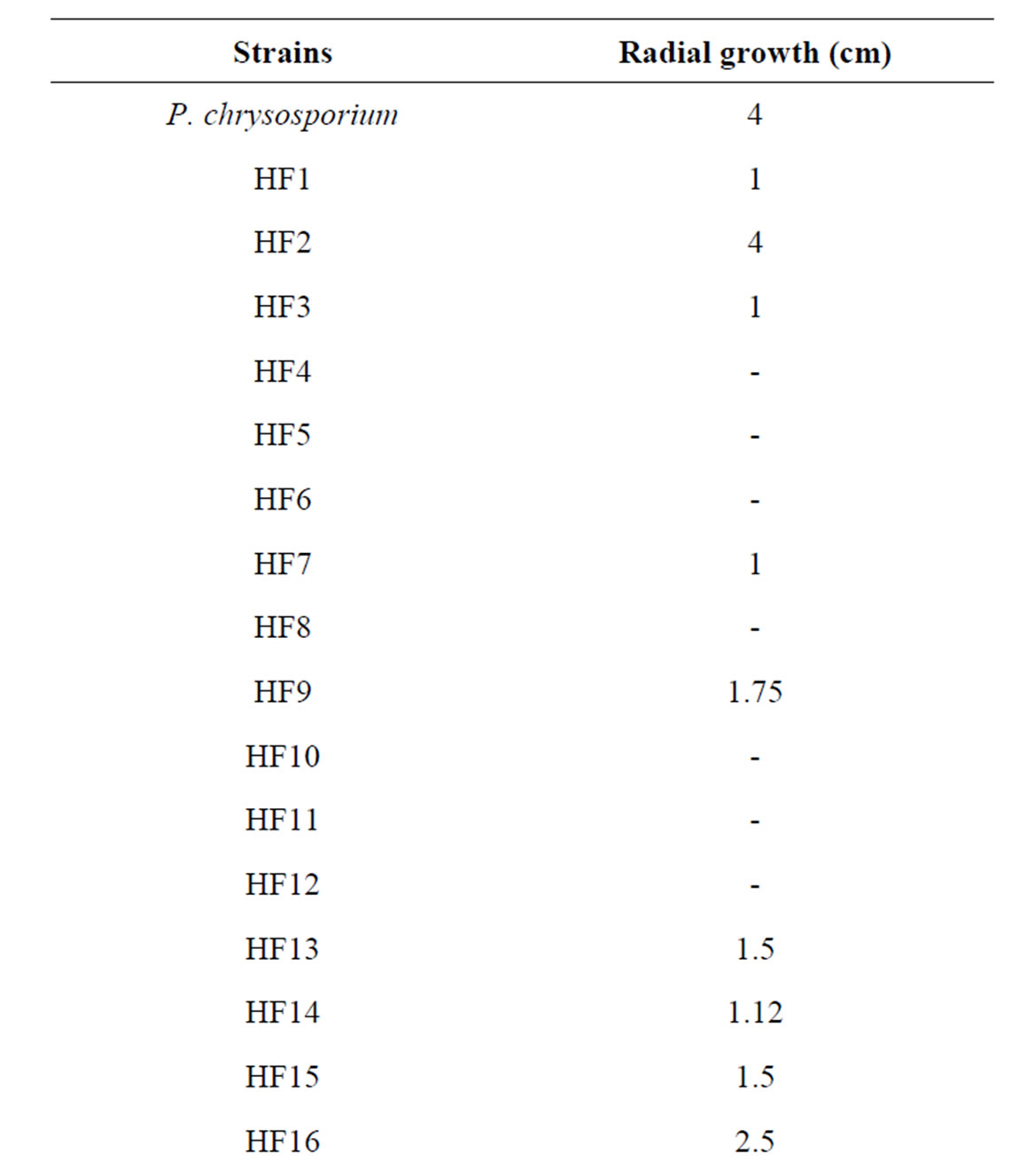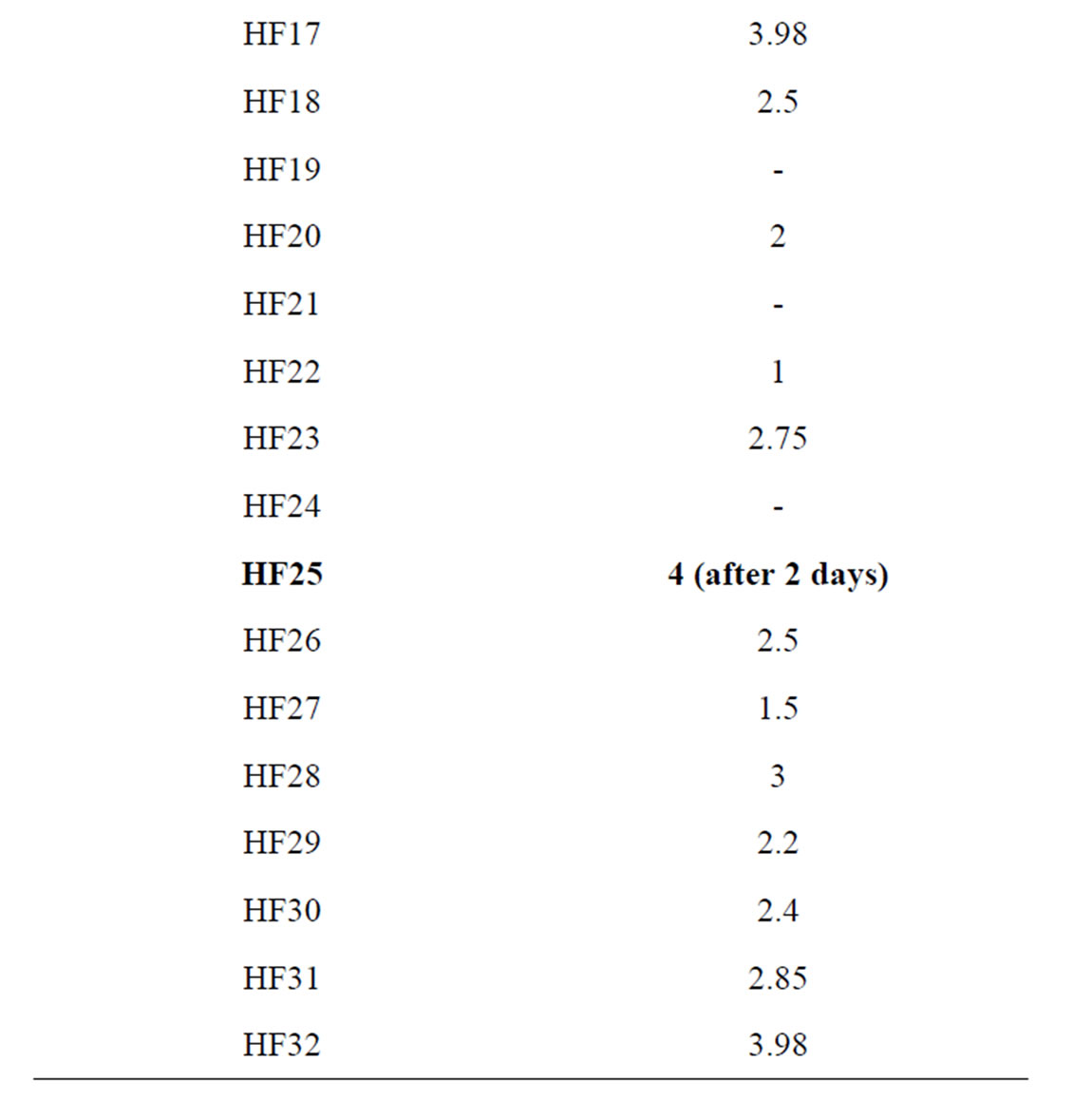Biodegradation of Toxic Compounds in Olive Mill Wastewater by a Newly Isolated Potent Strain: Aspergillus niger van Tieghem ()
1. Introduction
Over 750 million olive trees are cultivated worldwide, 95% of which are in the Mediterranean region. The olive oil industry produces 440 L oil mill wastewater per 100 kg of treated olive [1]. Olive mill wastewaters (OMW) are dark liquid effluents, which pose a critical problem for olive oil producing countries. They have a very high organic load, chemical oxygen demand (COD) generally varying from 50 to 200 g/l. These values are 200 to 400 times higher than municipal water [2]. The major components in the colored fraction are substances of polymeric nature, derived from several low molecular weight phenolic compounds, chemically related to lignin and humic acids [3]. OMW phytotoxicity is essentially linked to its high phenolic compounds content that are the modified forms of phenols of the olive fruit [4]. Because of its special characteristics, OMW treatment and valorization are serious problems for Mediterranean countries producing annually around 30 million·m3 of OMW [4]. Many processes have been developed to treat this effluent: The currently employed systems for OMW treatment can be classified as biological, physicochemical, or combined processes. Various physico-chemical methods have been proposed for treating OMW, including simple evaporation, electrocoagulation [5], oxidation by ozone and Fenton reagent [6], as well as reuse of the OMW by spreading onto agricultural soil as an organic fertilizer [4]. The use of microorganisms to remediate contaminated sites or break down toxic effluent wastes is gaining wide acceptance and practice. Biodegradation is versatile, inexpensive, and can potentially turn a toxic material into harmless end-products. Because toxicity has been directly linked to the phenolic fraction, higher fungi such as Yarrowia lipolytica [7] and Paecilomyces farinosus [8] have been proposed to detoxify and de-colorize the OMW. However, most of previous studies regarding the screening of fungi for biotechnological purposes have focused on species or strains deposited in culture collections [9]. Therefore, it may be beneficial to investigate new fungal isolates for potential applications in the field of bioremediation.
The present work was aimed at studying the ability of an Ascomycete, newly isolated from olive oil production plants and classified as Aspergillus niger van Tieghem (DSM 24787), to modify the polluting properties and reduce the phytotoxicity of OMW in comparison with that of Phanerochaete chrysosporium Burdsall M1 [10].
2. Materials and Methods
Olive mill wastewater (OMW) was collected from an olive oil factory in Marrakech (Morocco), and stored at 4˚C until use. The samples used in the experiments were filtered through cotton to remove suspended particles. The effluent characteristics, in terms of COD, phenolic compounds and color, were 114 g O2/l, 18 g/l and 16 (absorbance at λ = 395 nm), respectively.
2.1. Strain and Cultures Conditions
Two different fungal strains were used in the OMW treatment experiments: a strain isolated from olive oil production plants using the agar plate technique and classified by DSMZ (Braunschweig, Germany) as Aspergillus niger van Tieghem (DSM 24787) and Phanerochaete chrysosporium Burdsall M1 (DSM 13583) [10] isolated from OMW. Fungi were maintained through periodic transfer at 4˚C on potato-dextrose (2.4%) agar plates in the presence of 0.5% yeast extract.
2.2. Solid Cultures
Cultures on solid media were conducted in duplicate, in plates containing 10 ml of a sterile solution composed of potato-dextrose agar and OMW.
2.3. Inocula Preparation
Before using in the biodegradation experiments, the strains were first precultivated during 2 days for A. niger and 5 days for P. chrysosporium at 28˚C under agitation (rotary shaker-150 rpm) in 50 ml of the liquid version of OMW-based medium supplemented with 0.35% (NH4)2SO4 and 0.065% KH2PO4 (w/v), contained in 250 ml Erlenmeyer flasks.
2.4. Liquid Cultures
Liquid cultures were conducted in duplicate, in 250 ml Erlenmeyer flasks containing 50 ml of an OMW (25%, 50%, 75% and 100% (v/v)) sterile supplemented uniformly with 0.35% (NH4)2SO4 and 0.065% KH2PO4 (w/v), and adjusted to the final volume with tap water. The flasks were inoculated with 0.4 g/l dry weight fungal biomass and incubated in a rotary shaker at 150 rpm and 28˚C. Samples were taken daily for analysis.
2.5. Biomass Estimation
Biomass produced during cultivation of A. niger and P. chrysosporium on the OMW media was estimated by filtration of the culture medium on glass microfibres (GF/A Whatman Inc.). The retained biomass was washed twice with 5 ml distilled water and dried overnight at 105˚C. Growth yield was expressed as gram of dry weight per liter of culture.
2.6. Estimation of Tannase Activity
Tannase was estimated by the spectrophotometric assay of Aissam et al. [11]. One unit of enzyme activity (EU) was defined as the amount of enzyme catalyzing the hydrolysis of one µmol tannic acid per minute. The results are expressed in EU /ml.
2.7. Analytical Methods
Before analysis the samples were filtred on glass microfibres [GF/A Whatman Inc.). In the sample, COD, polyphenols, dark color intensity and pH were measured. Chemical oxygen demand (COD) were determined according to APHA standards methods [12].The dark color intensity was determined by measuring the sample’s absorbance at 395 nm respectively using a CARY 1E VA RIAN spectrophotometer, in 1cm path-length cells [13]. Determination of the concentration of total polyphenols was carried out with the official spectrophotometric procedure (720 nm) in which the reagent Folin-Ciocalteu was used as a selective reagent for polyphenols [14] using a CARY 1E VARIAN spectrophotometer, the results were expressed as gram of gallic acid per liter. OMW phytotoxicity was quantitatively estimated using the parameter of “Germination Index” (G.I.) as described by Komilis et al. [15]. Assays were performed using Triticum sativum seeds.
3. Results and Discussion
3.1. Isolation and Identification Studies
It is well known that OMW contains all essential elements for microbial growth (e.g. carbon and nitrogen sources, minerals), but also several growth inhibitors, such as organic acids and phenolic compounds. 32 strains isolated from pomace or OMW were screened for their tolerance to the polyphenols and their OMW-decolorizing potential on potato dextrose agarsupplemented with OMW (Table 1). Radial growth was measured daily.


Table 1. Comparative radial growth in PDA supplemented with OMW of 32 fungi after 3 days of incubation (HF 25 = Aspergillus niger van Tieghem).
Strain HF25 showed colonies reaching 9 cm (the maximum) in diameter in 2 days at 28˚C whereas P. chrysosporium reached the same value after 3 days. During strain HF25 growth a discoloration of the medium progressively occurred in the plates. Discoloration began with the formation of clear zones around the colonies. Complete discoloration was assessed as the total disappearance of color without any visible sorption to the biomass. These tests showed that strain HF25 had the best capability of removing black color and was further identified by DSMZ as Aspergillus niger van Tieghem (DSM 24787) on the basis of morphology. This strain had a conidiophores thick-and smooth-walled, up to 15 µm Ø, terminating in globose vesicles of mostly 40 - 50 (-60) µm Ø. Metulae mostly present in larger conidiophores up to 12 µm long; phialides ampulliform, 7 - 8 µm long, with a short neck; conidia more or less globose, mostly 4 - 4.5 µm Ø, brown, surface ornamented with warts. According to these preliminary results, all the following trials were performed with Aspergillus niger van Tieghem strain in sterile media.
3.2. Effect of Initial COD on OMW Treatment
Table 2 shows the physicochemical characteristics changes in OMW after 7 days incubation with strains of Aspergillus niger van Tieghem in shaken culture. Results indicate that a direct effect of initial OMW concentration on COD, total phenolic compounds (PC) and phytotoxicity removals was observed. For the medium containing COD0 = 28 g/l and COD0 = 57 g/l the percentage of total phenolic compounds removal was ranged between 56% and 45% respectively. The percentage of COD removal was ranged between 63% and 53% respectively. Whereas the reduction of phytotoxicity was 39% for COD0 = 28 g/l and 10% for COD0 = 57 g/l. For the medium containing OMW with COD0 = 85 g/l and COD0 = 114g/l no significant growth in term of biomass increase was observed. Phenolic components, when present above a